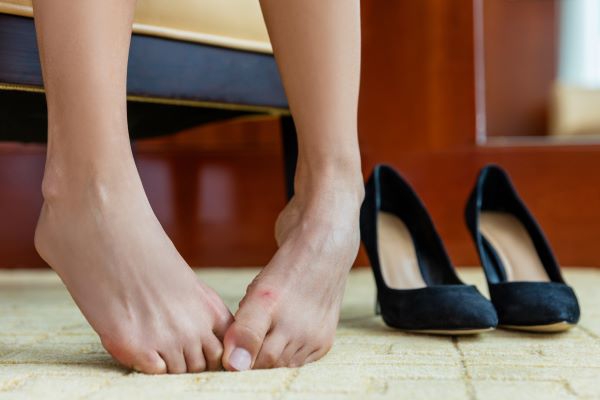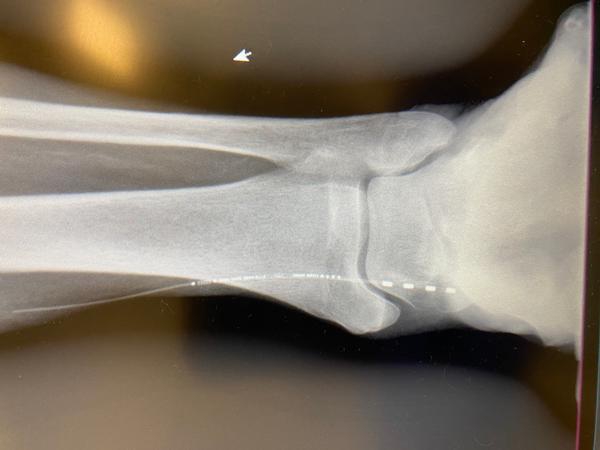Our Las Vegas Podiatrist Provides Skilled Care for Common Foot and Ankle Conditions
Don't let foot problems rob you of the excitement and thrill that Sin City has to offer! At Centennial Foot & Ankle, skilled Las Vegas podiatrist Dr. David Biesinger diagnoses and treats foot and ankle conditions that can cause pain, discomfort, or embarrassment.
Keeping up with the fast-paced Vegas lifestyle demands healthy, happy feet. Contact us today to request an appointment so you can reclaim your ability to explore Las Vegas without limitations
Bunions
A bunion is a bony bump that forms on the joint at the base of the big toe. It develops when the big toe leans inward toward the second toe, causing the joint to project outward. Bunions are often caused by genetics, arthritis, or ill-fitting shoes that put excessive pressure on the toes.
Bunions often cause pain, tenderness, swelling, and redness around the affected area, especially after periods of prolonged standing or walking. The constant friction and pressure from the bunion rubbing against shoes can also lead to the development of thick, hardened skin or calluses.
Treatment for bunions may involve:
- Wearing wider shoes with a low heel and soft material over the bunion
- Using bunion pads or splints to reduce friction and pressure
- Taking over-the-counter anti-inflammatory medication
Dr. Biesinger may recommend bunion surgery to realign the toe joint in severe cases.
Foot Pain
Potential causes of foot pain include injuries, arthritis, poorly fitted shoes, overuse, and foot deformities. Foot pain can manifest in different ways, from a dull ache to sharp, shooting pains. It may affect the toes, balls of the feet, arches, or heels.
Depending on the underlying cause, treatments may include:
- Resting and elevating the foot
- Applying ice to reduce swelling and pain
- Taking over-the-counter or prescription anti-inflammatory medication
- Wearing proper footwear with arch support and cushioning
- Using custom orthotics to correct biomechanical issues
- Physical therapy exercises and stretches
- Steroid injections to reduce inflammation
Hammer Toes
Hammer toes are caused by an abnormal bend in the middle joint of a toe, causing the toe to bend downward in a hammer or claw-like shape. This deformity can affect any toe but most commonly affects the second, third, or fourth toes. Hammer toes are often caused by wearing ill-fitting shoes, muscle imbalances, or inherited foot structure.
Hammer toes can make it difficult to find shoes that fit properly, as the raised toe can rub painfully against the top of the shoe box. Patients may experience cramping sensations in the affected toes as well as pain radiating into the ball of the foot. In severe cases, hammertoes can even cause the toes to become immobile and frozen in the contracted position.
Treatment options include:
- Wearing roomy, non-binding footwear
- Using toe pads, inserts, or splints to reposition the toe
- Doing toe stretches and exercises
- Taking oral anti-inflammatory medication
- Surgery can be done to straighten the toe
Heel Pain
One of the most common causes of heel pain is plantar fasciitis, inflammation of the band of tissue (plantar fascia) that runs from the heel bone to the ball of the foot. This condition often causes severe heel pain and stiffness, especially in the morning or after periods of rest.
Signs and symptoms of plantar fasciitis include:
- Sharp, stabbing pain in the heel
- Pain that worsens after activity
- Pain that is most severe in the morning or after rest
- Swelling along the inside of the heel
- Difficulty standing up or walking after resting
Treatment options for plantar fasciitis may include:
- Resting and icing the foot
- Stretching exercises
- Taking oral anti-inflammatory medication
- Using night splints to keep the foot and plantar fascia gently stretched while sleeping
- Wearing supportive shoes and using heel cups or custom orthotics
- Steroid injections (for severe cases)
- Shockwave or laser therapy
- Surgery (very rare cases that don't respond to other treatments)
Sweaty Feet
Sweaty feet, also known as hyperhidrosis, are a common problem. When your feet sweat excessively, this leads to dampness, odor, and an environment prone to fungal infections like athlete's foot. Sweaty feet can be caused by hormonal factors, medications, stress, or an underlying medical condition.
Treatment approaches may involve:
- Using over-the-counter or prescription antiperspirants on the feet
- Wearing moisture-wicking socks
- Changing socks frequently and allowing shoes to dry between wears fully
- Taking oral medication
- Botox injections to temporarily block sweat glands
- Exploring surgical options to disable sweat glands







